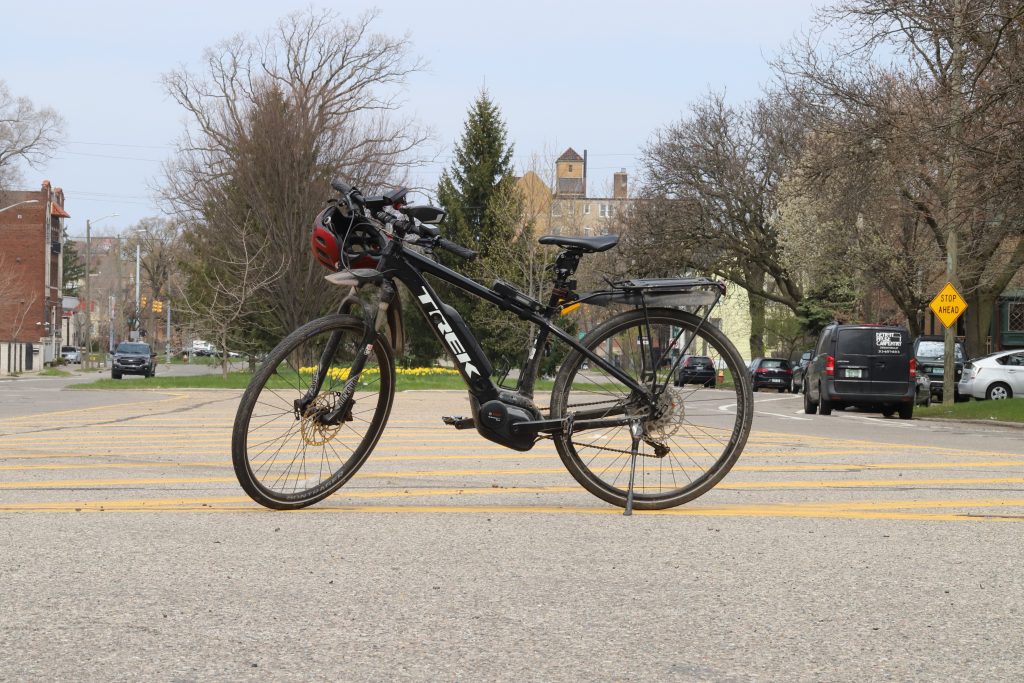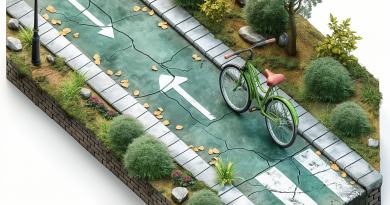Don’t Sleep On Electric Bikes
We are in the midst of a climate crisis, and the transportation sector is now the largest source of U.S. carbon emissions, with many of those coming from cars and SUVs. It’s clear that in order to meet the IPCC recommendation of zero emissions by 2030, we need to rapidly decarbonize our transportation sector.
There are many ways to accomplish this. We could invest heavily in public transportation, stop building highways, and build affordable housing near job centers so people don’t have to commute to get to work.
Trying to detail all of these approaches would fill volumes, and there are already some great proposals out there.
But I’d like to push back against one “solution” that seems to be the go-to for unimaginative politicians and the auto industry: electric vehicles. There’s this idea that decarbonizing the transportation industry means switching everyone over to electric cars. Not only is this tremendously expensive, but it may be too little, too late, as the American vehicle fleet takes 15 years, on average to turnover (a caveat: it will admittedly also require the beneficial, however expensive, transformation of our power grid). That puts us way past our 2030 deadline.
Instead, I’d like to argue that there’s a much more cost effective way to reduce transportation based emissions, that people often overlook: the electric bicycle.
Based on an investigation of the 2017 National Household Travel Survey, I think there’s a lot of potential in making electric bike conversion a core principle of decarbonizing transportation.

Cheaper Vehicles
Firstly, electric bikes are way cheaper than electric cars. An entry level, good quality, new electric bike (in this case, Rad Power Bikes’ RadRunner) costs $1,500, once you add accessories you would need to use it day to day.
By contrast, the cheapest new electric car I could find is the 2020 Hyundai Ioniq Plug-In Hybrid at $26,300. Even the cheapest used car I could find on Carvana was a 2014 Nissan Leaf at $10,200.
Already, the new electric car is 15 times more expensive than the electric bike. While increased scales of production, improved battery technology, and increased competition are all driving down the costs of electric cars, cars are always going to be more expensive than smaller (more thermodynamically-efficient, one might note?) vehicles.
In other words, you could give 15 people an electric bike for the same cost as giving one person an electric car. With the same amount of money, you could get fifteen times more cars off the road by using electric bikes than you could with electric cars.
[External links: Shopping for an eBike? Check out Amazon or California-based manufacturer LunaCycle.]
Will it blend? roll?
Ok, great, you might say, but that doesn’t mean much if people can’t go where they need to go. But the NHTS paints a compelling argument that they still can.
First, let’s dive into the specs of our RadRunner. It has a max speed of 20mph (though some reports say you can modify it up to 25mph) and a max range of 40 miles. The site doesn’t list a charge time, but let’s assume it takes 3-4 hours to gain back a sizable amount of range.
According to the NHTS survey, the average household has a daily range of 38 miles. That means if you add up all the trips that the average household takes in a day, it equals 38 miles. Out of all of those trips, the average length was 11.6 miles.
The range of the RadRunner is enough to accommodate these trips, especially if part of that range is to and from work, since you’ll be able to charge the bike at work.
But, only 31% of weekday trips, and ~17% of total trips are work related. The largest category of trips are shopping and errands, followed by social and recreation. You may be thinking: there’s no way that I can grocery shop on a bike. You may be wrong. Delivery services also make this much more of a reality (as does shopping more frequently, but buying fewer things).
The NHTS doesn’t specific what “errands, social, and recreation” entail, but it likely means things like meeting a friend at the park, or going to dinner, or dropping off some mail at the post office. All of these things are very doable on a bike, especially if your friends now own their own electric bike.
What about weather? Commuting?
Even weather isn’t as big of an obstacle as some may think it is. Some of the best cities for cycling, both domestically (Minneapolis, MN; Fort Collins, CO; Chicago, IL) and abroad (Oslo, Norway; Copanhagen, Denmark; Helsinki, Finland) are in really cold places. Commuter cycling rates are more correlated to how well-developed the local cycling infrastructure is– as opposed to weather. Humans have adapted to changing conditions throughout our evolutionary history. With the right pair of clothes, this is no different.
Of course, I don’t think e-bikes are going to replace 100% of the car trips in this country. Most of the population lives in areas with suburban land-use patterns, with relatively large distances between uses. Even with investment in cycling infrastructure, some metros will still be so spread out that cycling becomes impossible. Changing those land use patterns will take years and political will.
For others, being differently abled or having a large family might preclude you from biking (though, maybe it doesn’t– companies are starting to develop electric models of adaptive bikes). But I think there’s a compelling argument to make that electric bikes can be a fundamental part of the transition away from high carbon transportation, because of their low cost and versatility. Policy makers should consider ways to incentivize bicycle use by making driving harder, investing in bike infrastructure, and introducing an e-bike tax credit (similar to the federal EV tax credit). As bike infrastructure is cheaper to build and maintain, and as bikes are cheaper to buy and maintain, it’s a win for everybody.
So go ahead and buy that electric bike. It’s not cheating. They’re tons of fun. And our planet is depending on them.
Nithin Vejendla is a 2019 Venture For America fellow living in Detroit. He spends his time outside of work riding his Lectric XP e-bike, and fighting for a more equitable city through Sunrise Movement and Detroiters for Parking Reform. The opinions expressed in this article are personal and do not necessarily reflect those of Venture for America.



